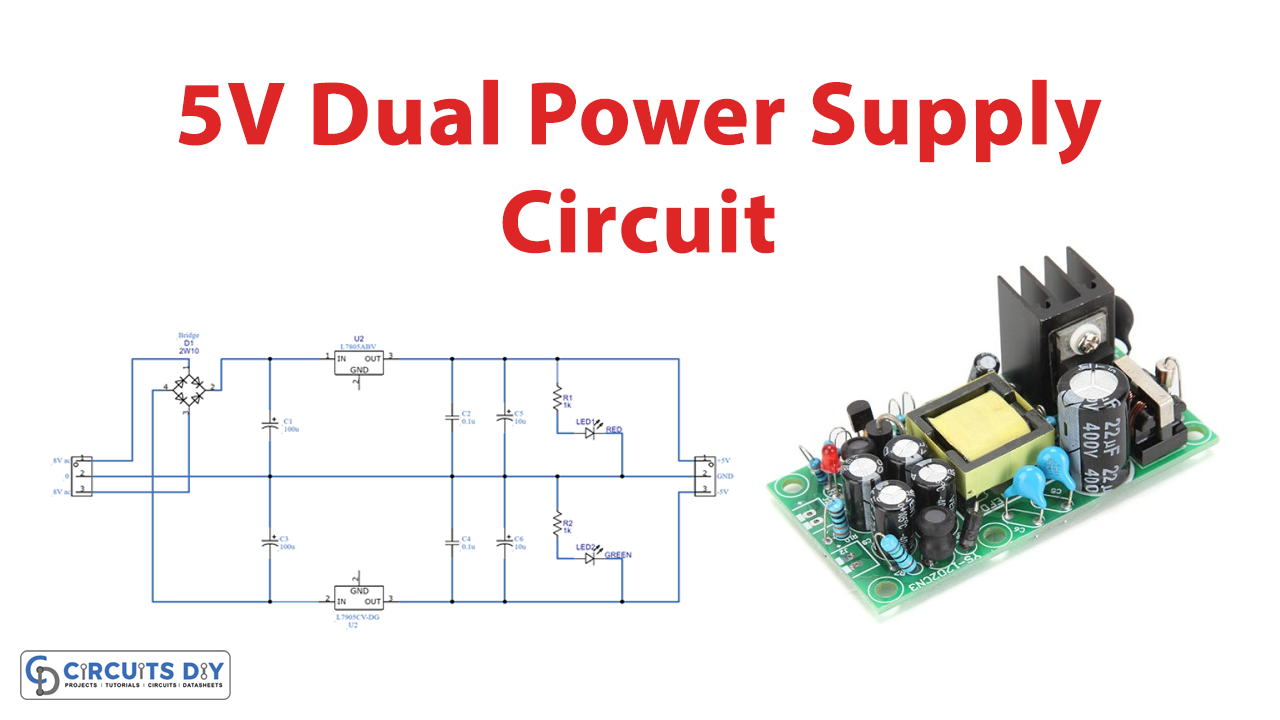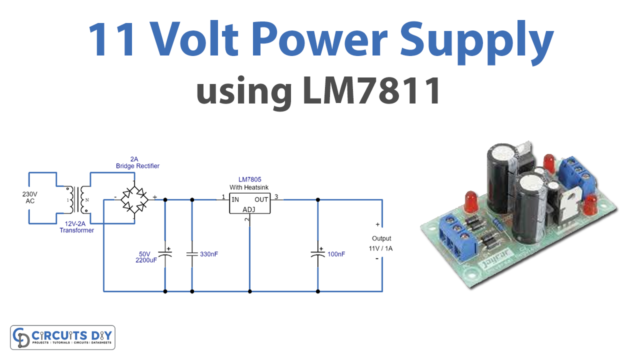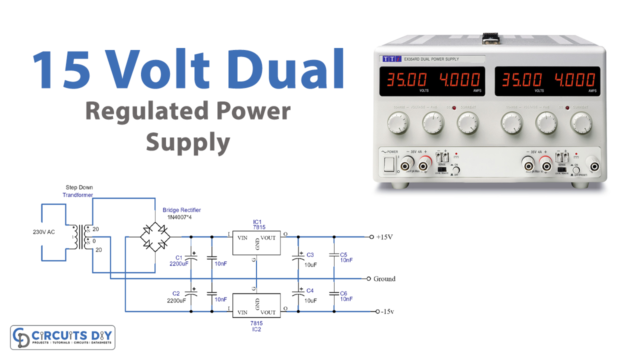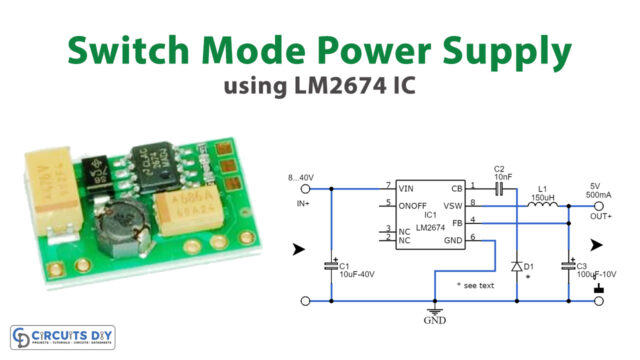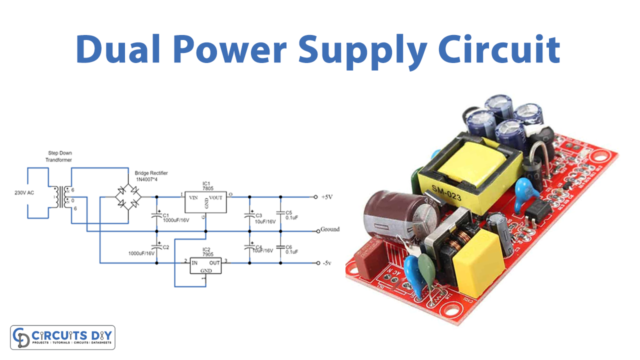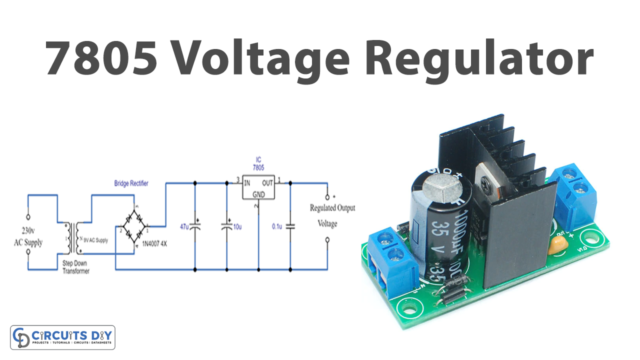In this tutorial, we are going to make a “5V Dual power Supply circuit”. Most analog electronic circuits and many controllers or output actuators require dual power supply rails, for proper balanced operation. This gets especially critical if we are designing operational amplifier circuits. The negative supply voltage is also required in digital systems, like A/D converters, op amps, and comparators. By using a battery power source or USB power source, we cannot provide those biases to circuit elements. Here we designed a simple 5v dual power supply circuit by using low-cost voltage regulators, and a center tap transformer. This will help us, to convert a single power source into a dual power supply (+ and – with Gnd).
Hardware Required
| S.no | Component | Value | Qty |
|---|---|---|---|
| 1. | Cenntertap Transformer | 8-0-8Vac | 1 |
| 2. | Bridge Rectifier Module | – | 1 |
| 3. | IC | LM7805 | 2 |
| 4. | Resistor | 1KΩ | 2 |
| 5. | Capacitor | 100uf,0.1uf,10uf | 2,2,2 |
| 6. | 3 Pin Screw Connector | – | 2 |
| 7. | Connecting Wires | – | – |
| 8. | LED | – | 2 |
Circuit Diagram
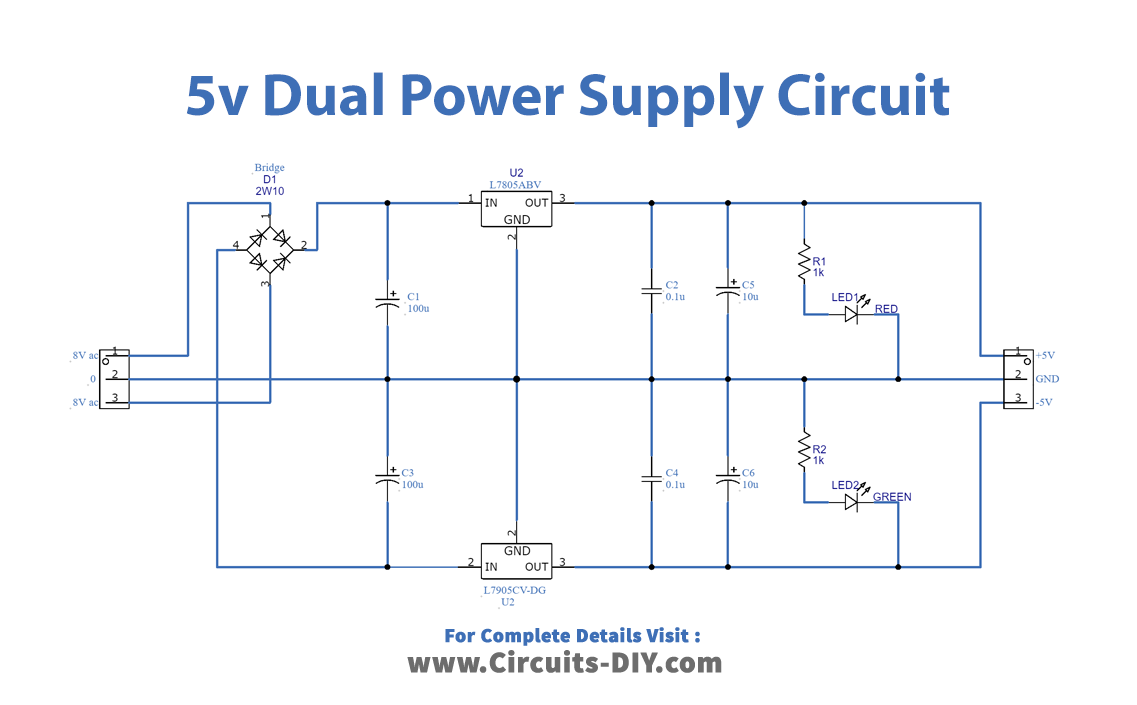
Working Explanation
Her first center tap transformer converts 230V/ 110V AC supply to 8-0-8Vac. Then this AC supply is directly applied to the bridge rectifier module (or you can use four diodes in bridge format). After the rectifier, we used capacitors to filter the ripple, as output from the bridge will be rippled DC. Here center tap terminal is taken as the GND terminal. +V out from the bridge rectifier regulated by IC7805 positive regulator, and -v out from the bridge rectifier regulated by IC7905 negative regulator.
Now final stage filtering is performed by 0.1uF & 10uF capacitors. Here we used red LED at the +ve output terminal and green LED at the -ve output terminal, for indication purposes.
Application
- The dual power supply is used to power up the op-amp since OP-AMPS, needs to swing bipolar output voltages.
- Dual power supplies can be used in power banks, cell phone charging circuits or battery-less power circuits, etc.
- The dual power supply is also used in generators.


